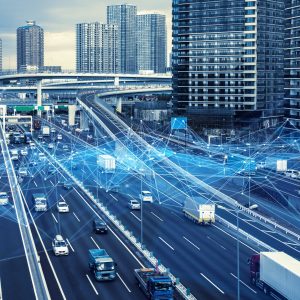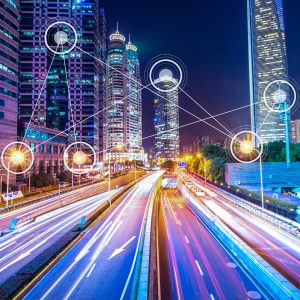
Over the next decade, 100 percent of new vehicles are projected to be connected in some way, according to a report by McKinsey & Company. Navigation, infotainment, mobility, telematics and other digital services that interact with the driver will become more widespread as well as connectivity between vehicles and the city infrastructure. Connectivity is now headed in a new direction outside the vehicle where connected devices essentially become a computing platform similar to a smartphone. This includes V2X (connected vehicle to everything), V2V (vehicle to vehicle), Home Connect technology and other IoT platforms.
“The automotive industry is at a transformational moment… there are a lot of interesting challenges to come,” observed Raj Paul, regional industry business leader of Automotive Americas for Microsoft.
Connected Cars And Disruptive Technology
Paul recently discussed emerging automotive trends during a Frost & Sullivan webinar focused on the connected car. He gave attendees an inside look at connected vehicles, including the growth opportunities, technology and emerging industry trends.
Paul was joined by Krishna Jayaraman, the program manager of connected car & IoT for Frost & Sullivan UK, and Niranjan Manohar, research manager of connected car & IoT at Frost & Sullivan USA. Both also spoke about connectivity and where they believe it’s headed.
The simultaneous disruption and evolution in the automotive industry can be attributed to what is referred to as C.A.S.E., according to Jayaraman. The acronym stands for Connectivity, Autonomous, Sharing/Subscription and Electrification. It is what many say will guide the future of the automotive industry.

It wasn’t too long ago that drivers were insulated from the outside world while they were in their vehicles; however, more and more consumers are adopting the new technology available and demanding connectivity features.
“With changing preferences and consumers embracing the new technology, it has helped give rise to the number of connected cars,” said Jayaraman. “Connectivity is becoming ubiquitous.”
Meanwhile, the industry and innovators are challenged to establish goals and industry standards around connectivity. OEMs, tier one businesses that supply components to the automobile manufacturers and technology companies are recognizing the importance of building a configurable platform for the connected vehicle so it can be monetized.
“The connected car is a learning machine, so it can learn from its environment and its driver because it’s full of smart sensors and software that can detect and analyze the different situations,” says Olivier Sappin, vice president, Transportation and Mobility Industry for Dassault Systèmes. “In today’s vehicles, the technology is incredible. You can find as many lines of code as in the space shuttle. The car can detect if the driver will fall asleep. The car can also detect whether another driver will be in the blind spot and prevent the driver from changing lanes. The connected car of the future will mean a safer car, a safer driver, and safer roads.”
During the Frost & Sullivan webinar, Microsoft’s Paul shared 10 industry trends currently contributing to the growth of vehicle connectivity:
- The transformation of the customer experience with increased digital expectations
- A change in the manufacturing process of automobiles leading to the “factory of the future” and cost optimization
- The widespread adoption of electric cars and the realization that infrastructure will play a pivotal role in the future
- An increased interest by OEMs in autonomous vehicles
- The vital role of digital assistants and voice recognition technologies
- Advances in entertainment and in-vehicle productivity for consumers; this will be further redefined with 5G capabilities
- Connectivity becoming a standard rather than an option
- The dependence of the cloud in the connected car space
- A new focus on emerging business models to meet these trends
- Ongoing conversations regarding monetization
The Future Is On Demand
Currently, some hardware such as ADAS (Advanced Driver Assistance Systems) and infotainment are pre-built in automobiles, whereas on-demand features like Sirius XM, autonomous parking, tow assist and night vision are offered to customers on-demand. Many of these features will have functional upgrades and different payment options available.
 “From a daily usage standpoint, more than 30 percent of the features inside the car aren’t used by customers,” explained Manohar. As a result, consumers will be able to choose which features best meet their needs.
“From a daily usage standpoint, more than 30 percent of the features inside the car aren’t used by customers,” explained Manohar. As a result, consumers will be able to choose which features best meet their needs.
Jayaraman pointed out the rise of AI-based personal digital assistants in 2018, such as Alexa and Google, evident from the demonstrations at various automotive and electronic shows across the globe.
“AI is being leveraged to build conversational intelligence and personalized digital assistants that redefine the in-car experience,” said Manohar. Daimler’s Ask Mercedes, the BMW Intelligent Personal Assistant and Renault’s My Driving Partner are all examples.
“In the future, the convergence of personal assistants with cognitive abilities and automated driving space are likely the two overarching themes that will give rise to a unified system with complete control of the vehicle,” Manohar added. “This co-pilot will be like a humanized vehicle companion.”
